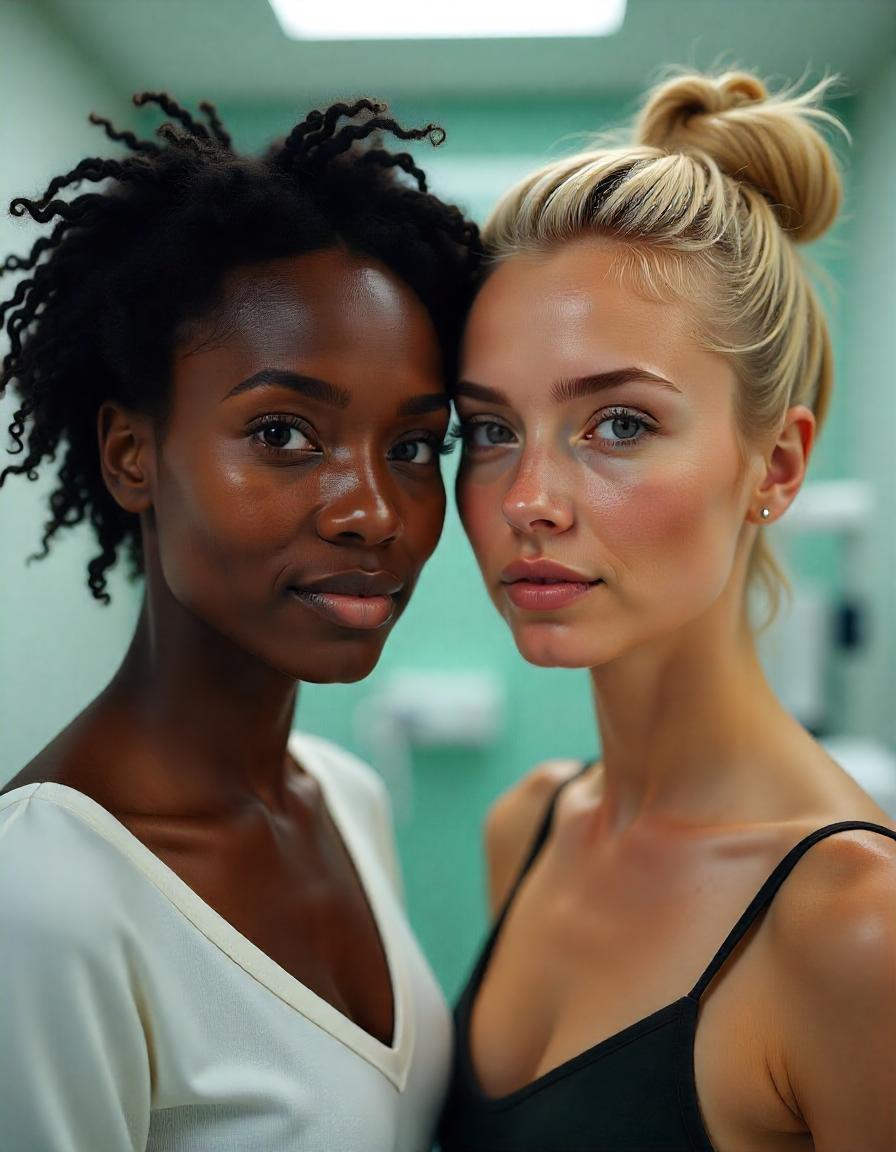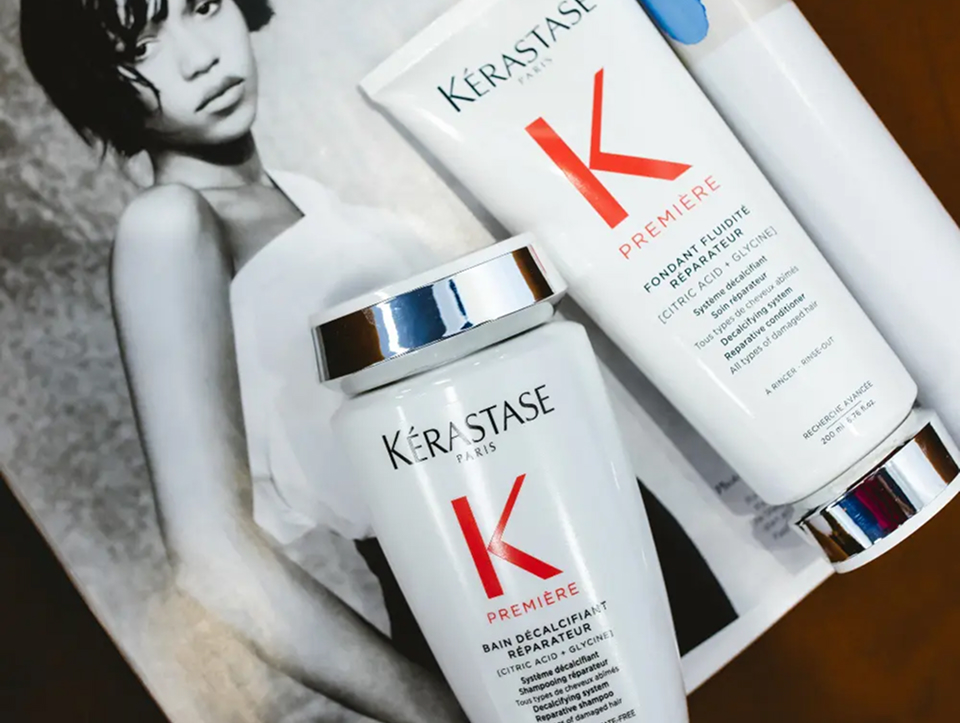Your hair type is more than a label; it’s the foundation of your hair care routine. Whether you’re struggling with frizz, flatness, or undefined curls, identifying your hair type gives you the power to treat it right.
But let’s be honest, most people use the wrong products or tools simply because they don’t understand their hair’s texture, shape, or needs.
In this guide, you’ll learn how to determine your hair type (1A to 4C), how it affects your care routine, and tips to treat your strands like a pro.
What Determines Your Hair Type?

Hair type is influenced by your genetics and is categorized by shape (straight to coily), texture (fine to coarse), and density (thin to thick).
The hair typing system created by stylist Andre Walker breaks it down into four main types:
- Type 1 – Straight
- Type 2 – Wavy
- Type 3 – Curly
- Type 4 – Coily
Each type is further divided into A, B, and C subcategories, which reflect width and texture:
- A = Fine
- B = Medium
- C = Coarse
📌 Tip: Your hair can have more than one type (e.g., 2B in the front and 3A in the back). A professional stylist can help you identify your dominant pattern: Check out our professional hair stylist tips.
Hair Type 1: Straight Hair (1A, 1B, 1C)

Straight hair lies flat, reflects shine, and often gets oily quickly. Here’s how the subtypes vary:
- 1A: Ultra-fine, pin-straight, and soft. Prone to oil buildup and lacks volume.
- 1B: Slightly thicker with a hint of body and movement.
- 1C: Thick and coarse, with some bends or waves underneath.
🧴 Care Tip: Use a volumizing shampoo like Kérastase Volume line and avoid heavy styling products that weigh your hair down.
💨 For extra body, learn how to get a voluminous blowout.
Hair Type 2: Wavy Hair (2A, 2B, 2C)

Type 2 hair features soft waves that range from barely-there to deep S-patterns:
- 2A: Loose, fine waves with minimal frizz.
- 2B: More defined waves and slight frizz around the crown.
- 2C: Thick, voluminous waves with more frizz and coarseness.
🧴 Care Tip: Avoid sulfates and use a moisturizing or curl-friendly shampoo like this one for wavy/curly hair.
Want that beachy look? Here’s how to get effortless beach waves that last.
🧴 Try deep conditioning weekly to reduce frizz: Explore hair treatment options.
This hair type has minimal bending or waves, and its density and thickness can vary from ultra-fine to thick and full. This is even broken down further:
- Type 1A: This is the finest and straightest hair type. It is smooth and shiny, has no volume, and can get oily quickly. Styling 1A hair is tricky; you need the right products and tools.
- Type 1B: The hair is very straight, has thicker strands with added body, and can better hold a style.
- Type 1C: The hair is straight, dense, and thick, with a slight wave or bend on the underside of the head. It has a lot of volume and body, but is coarse and more prone to frizz.
Hair Type 3: Curly Hair (3A, 3B, 3C)

This hair type features springy curls and ringlets that need moisture to thrive:
- 3A: Loose, defined curls about the size of sidewalk chalk.
- 3B: Tighter spiral curls the size of a Sharpie.
- 3C: Dense corkscrew curls that are thick and voluminous.
🧴 Care Tip: Use a pre-shampoo treatment like Kérastase Curl Manifesto to protect and hydrate curls.
Get styling tips tailored for curls: Cutting curly hair the right way and the Deva Cut technique.
✂️ Bonus: Learn why stylists love dry cutting for curls.
Hair Type 4: Coily/Kinky Hair (4A, 4B, 4C)

Coily hair is the most delicate and prone to shrinkage. It can look dense but is often fragile:
- 4A: Defined coils with visible spring.
- 4B: Tighter, zig-zag pattern with less defined curls.
- 4C: Very tight coils with little to no definition; prone to shrinkage and dryness.
🧴 Care Tip: Wash once or twice a month with a hydrating shampoo, followed by a rich conditioner or mask.
Seal in moisture with oils or a leave-in, and use a taming gel for edges. Prioritize scalp care—here’s how: Scalp care guide.
💡 Thinking of adding color? Explore the latest technique: What Are Air Touch Highlights?
Hair Type Chart: 1A to 4C at a Glance
| Hair Type | Description | Texture | Curl Pattern | Common Concerns |
|---|---|---|---|---|
| 1A | Very straight, fine, flat | Silky, soft | No curl | Oily scalp, no volume |
| 1B | Straight with slight body | Medium | Slight wave at ends | Greasiness, limpness |
| 1C | Straight, coarse, some wave | Thick | Subtle S-pattern | Frizz, dryness at ends |
| 2A | Loose, beachy waves | Fine | Soft S-waves | Lack of definition |
| 2B | More defined waves, frizz-prone | Medium | S-pattern | Halo frizz, dryness |
| 2C | Thick, coarse waves | Coarse | Deep S-shape | Poofiness, frizz |
| 3A | Loose spiral curls | Fine to medium | Chalk-sized curls | Frizz, definition loss |
| 3B | Tighter curls | Medium | Sharpie-sized spirals | Dryness, tangles |
| 3C | Corkscrew curls, dense | Coarse | Pencil-sized coils | Shrinkage, breakage |
| 4A | Defined coils | Soft, fine | S-pattern coils | Fragility, dryness |
| 4B | Tightly coiled, Z-pattern | Medium to coarse | Less defined | Shrinkage, brittleness |
| 4C | Tightest coils, no defined pattern | Very coarse | Zig-zag, tight coils | Breakage, extreme shrinkage |
💡 Tip: Your curl pattern might fall between types. That’s normal! Many people are a mix, like 3C in the back and 4A in the front.
How to Find Your Hair Type
The best way to discover your hair type:
- Wash and condition your hair.
- Let it air dry with no product.
- Observe your hair’s shape, texture, and density.
- Compare it to the curl type chart.
💡 Tip: Because hair can change due to hormones, stress, heat damage, or age, this test gives you a more accurate result than brushing alone.
Still unsure? Book a consultation with a stylist for a professional analysis.
Know It. Treat It. Style It.
Understanding your hair type empowers you to make smarter choices, whether it’s choosing the right shampoo, knowing when to deep condition, or getting the proper cut for your texture.
Your hair is unique. Embrace its type, treat it with intention, and style it with confidence.
Need help decoding your hair type or finding a custom routine? Book a hair consultation today; our experts are here to help.
FAQ
How do you check my hair type?
Let your hair air dry after washing with no product. Then compare its natural pattern to the 1A–4C hair chart.
Why is it important to know my hair type?
It helps you choose the right products, styles, and routines to maintain healthy, beautiful hair.
Can my hair be more than one type?
Yes. Many people have mixed types across different sections of their heads.
What’s the strongest hair type?
Types 1C and 4C are generally the most resilient, but they require different care strategies. Need more inspiration? Dive into the future of haircare for innovations that suit every hair type.









